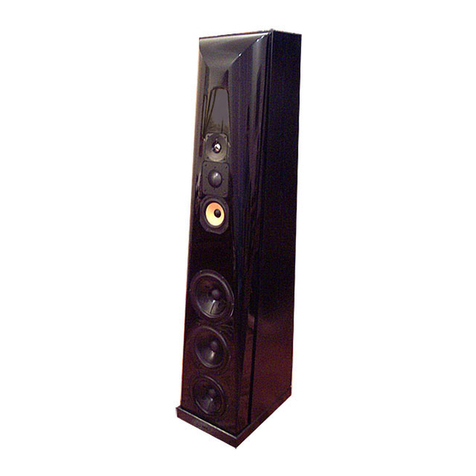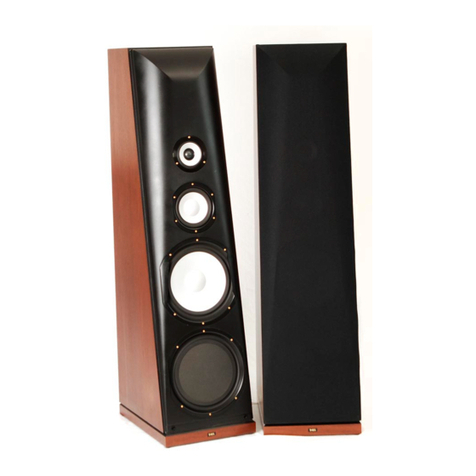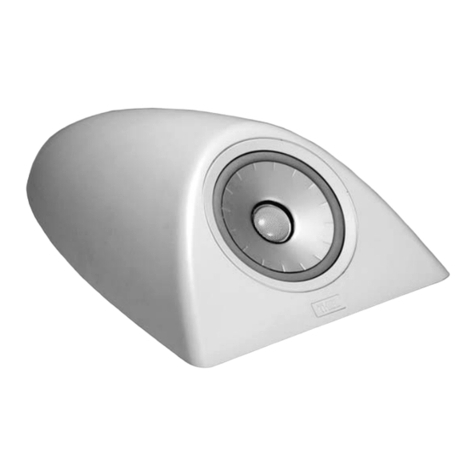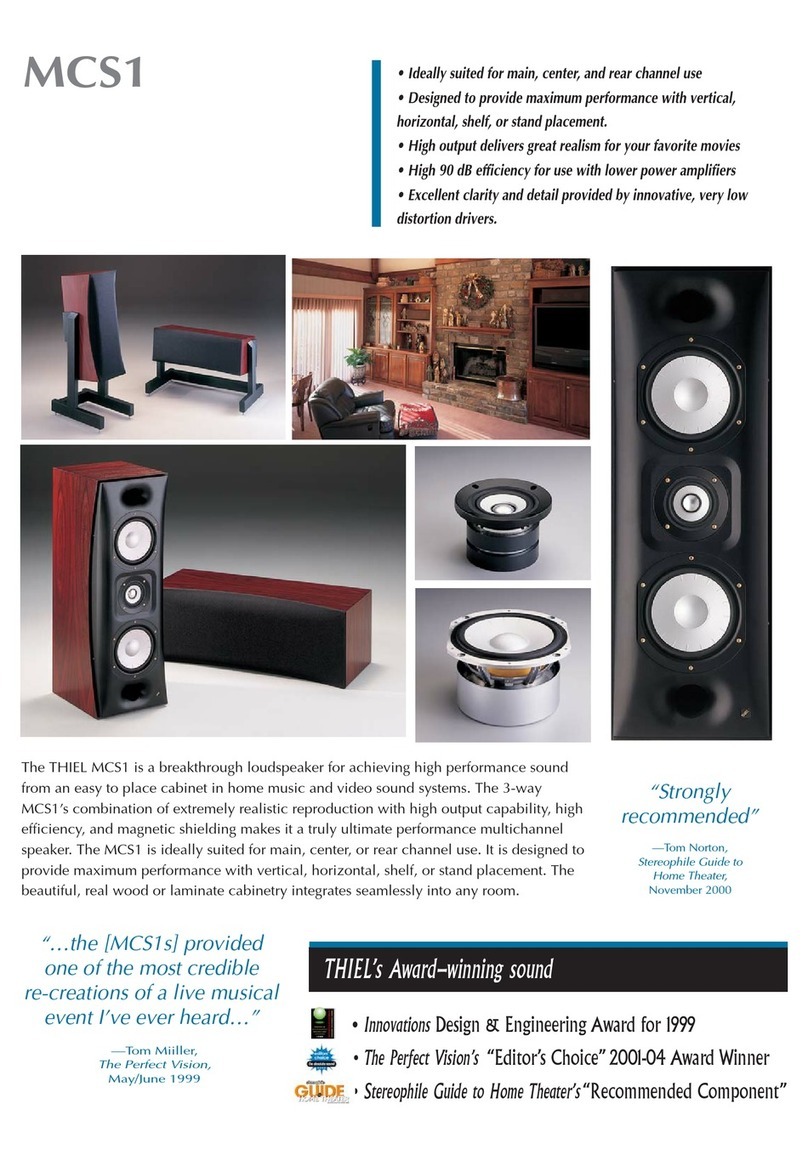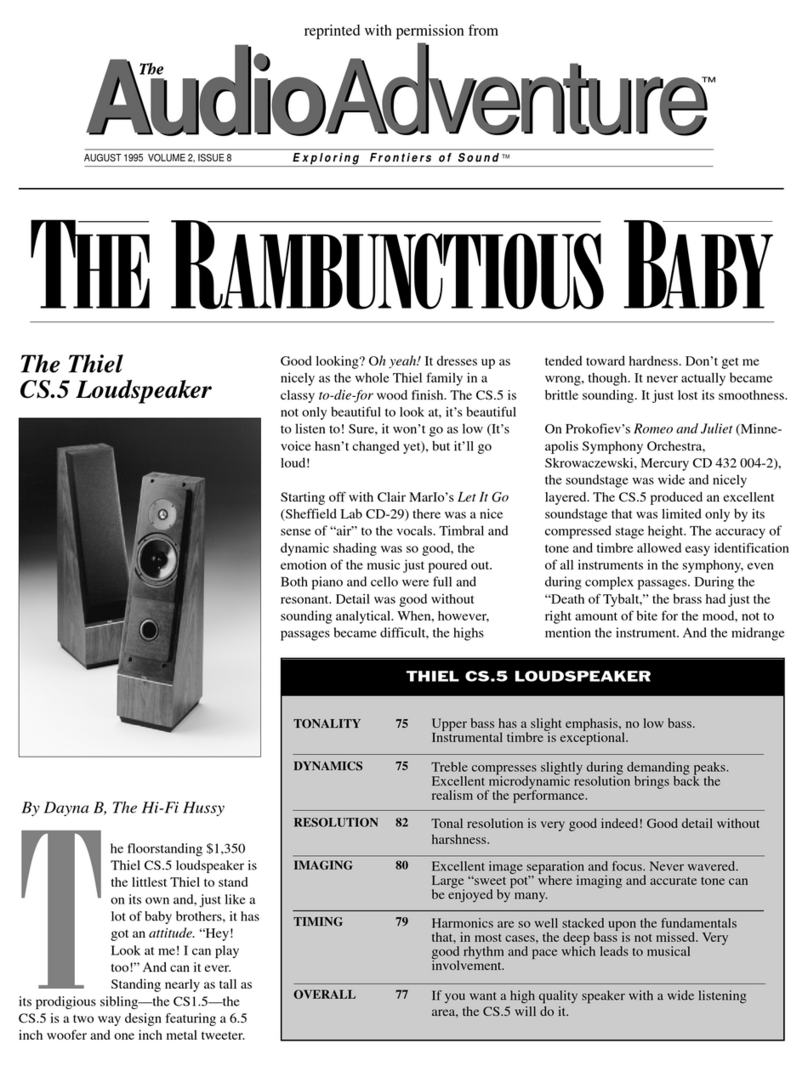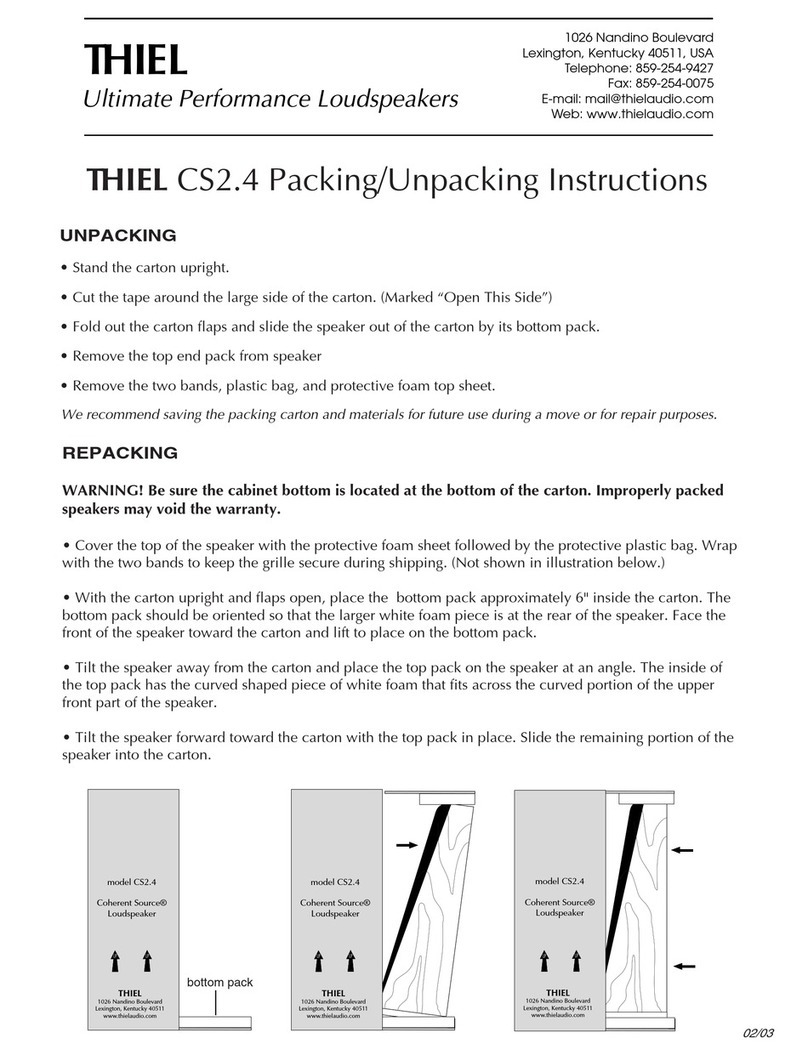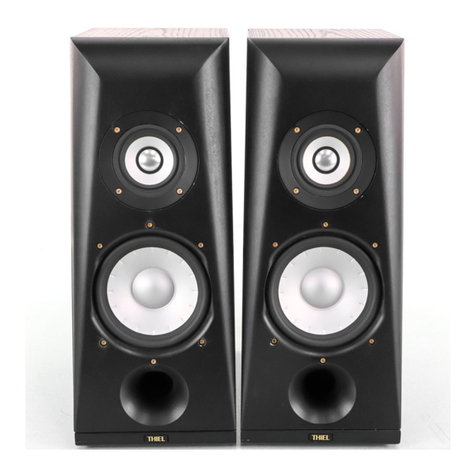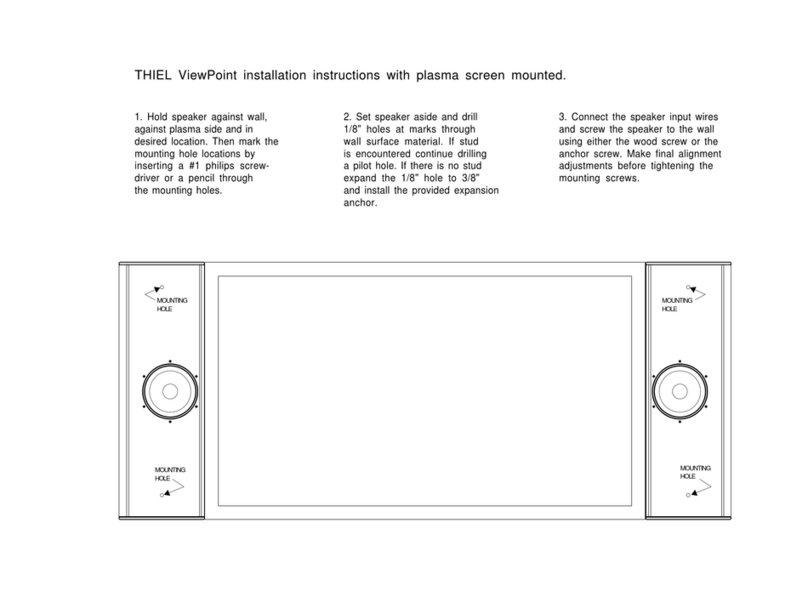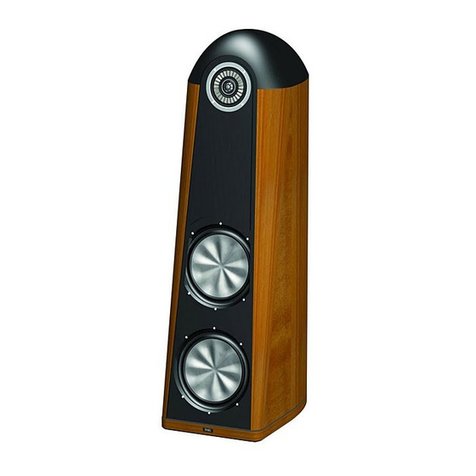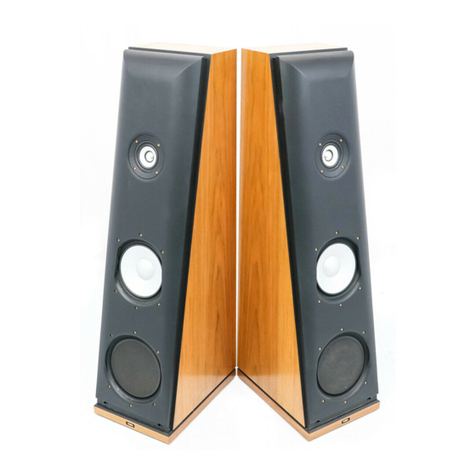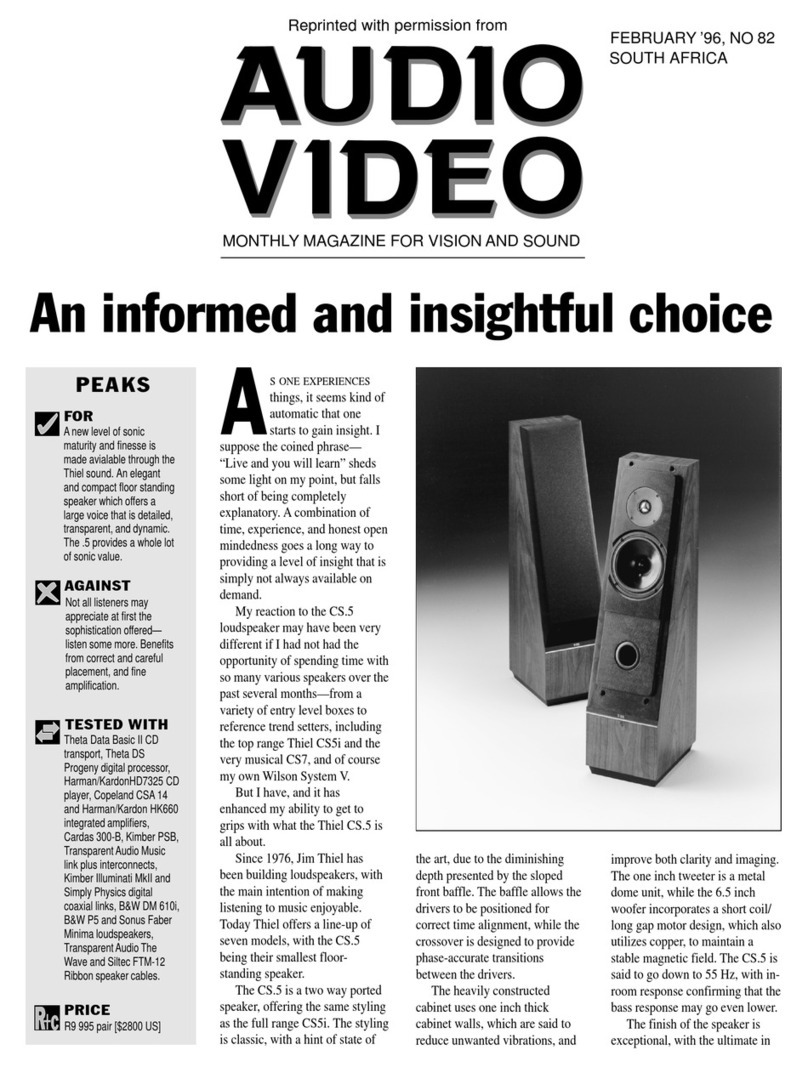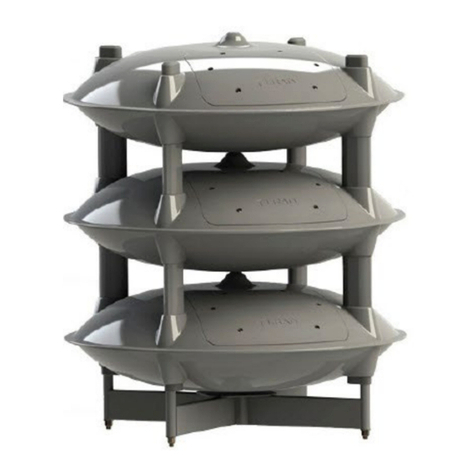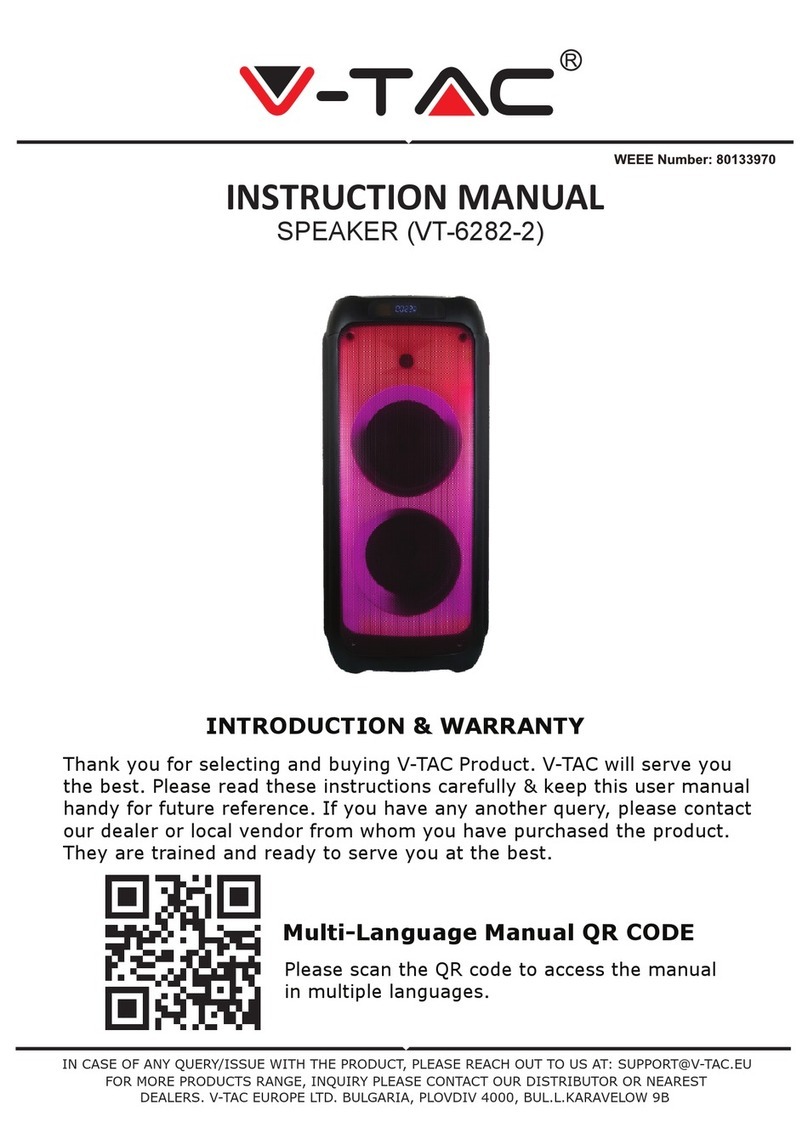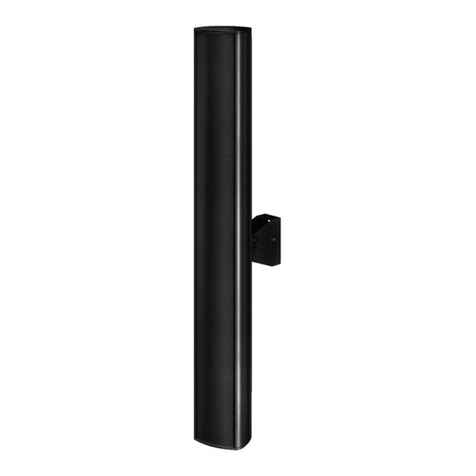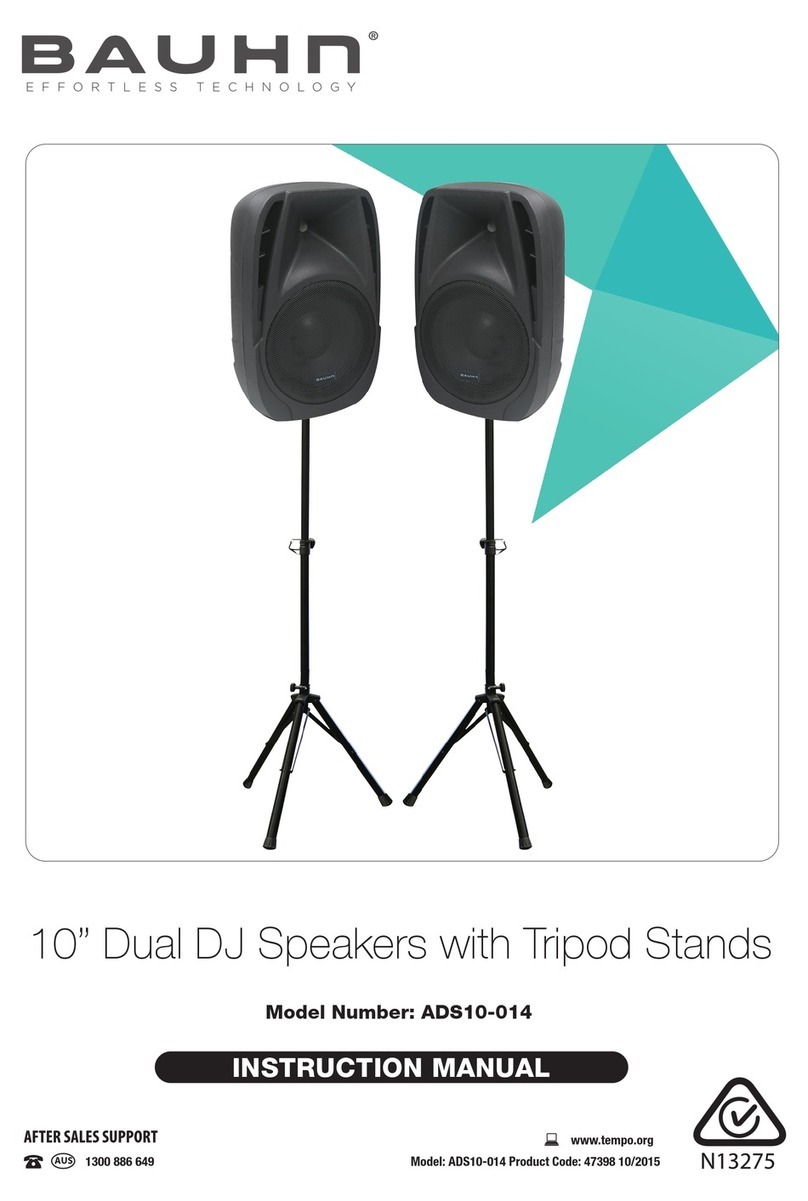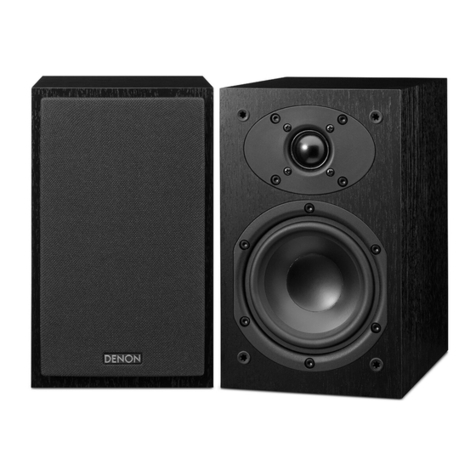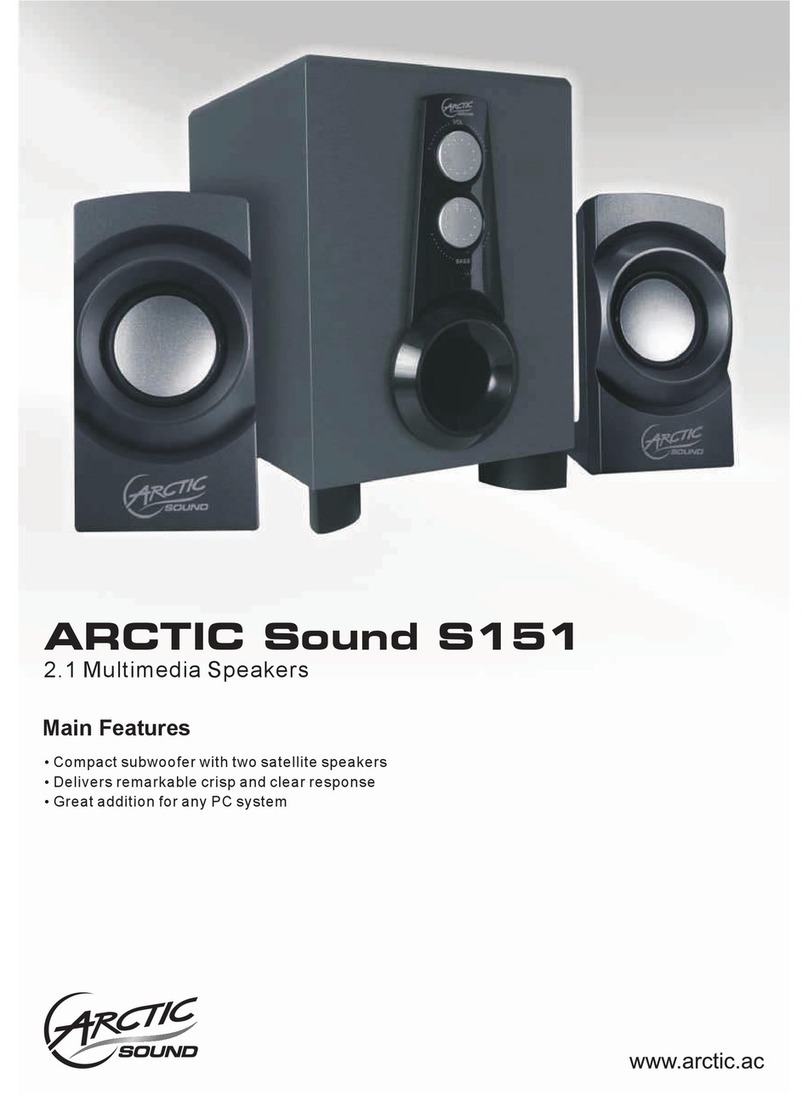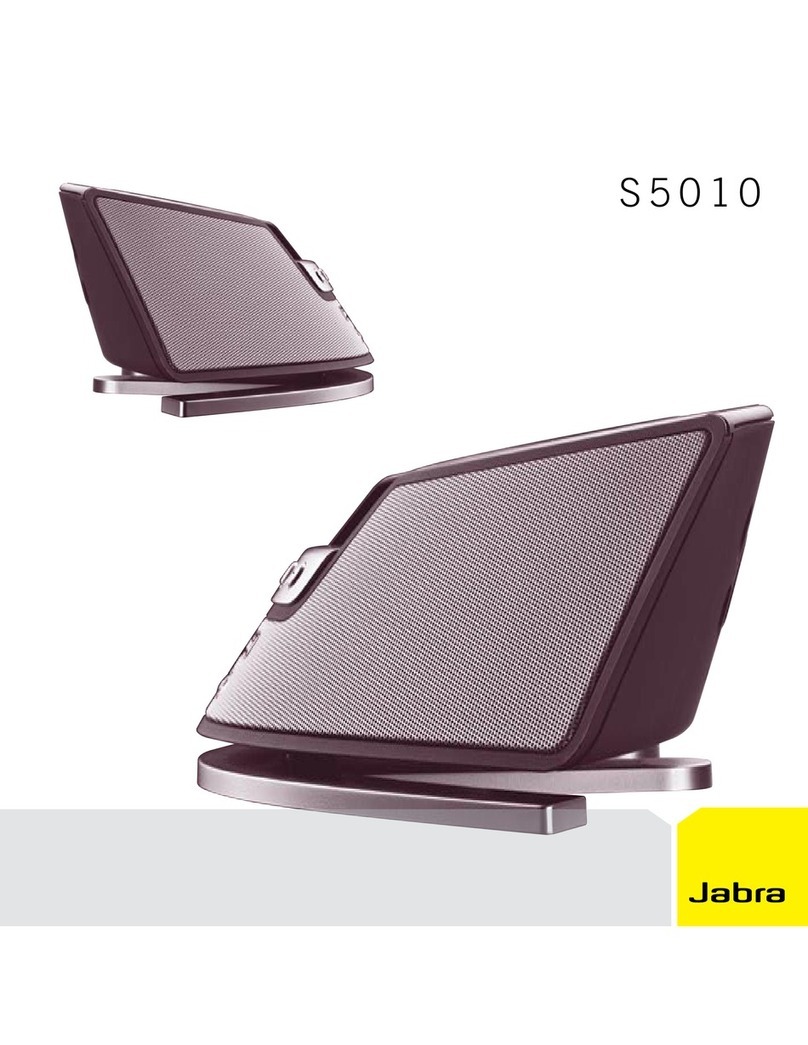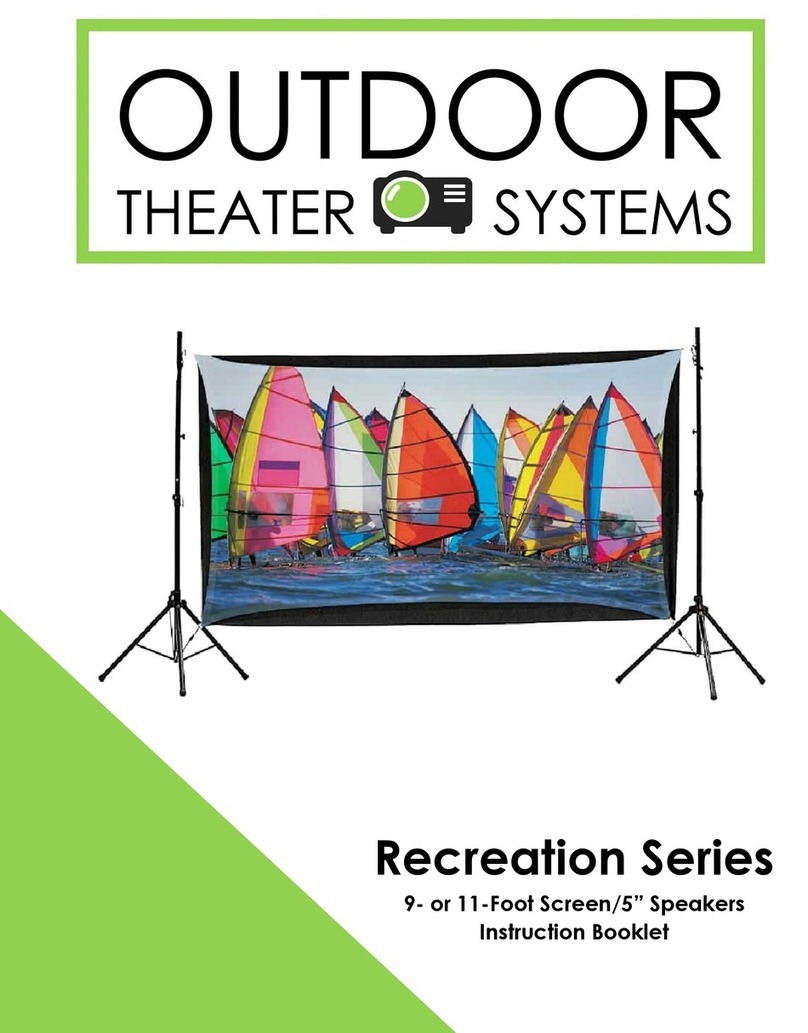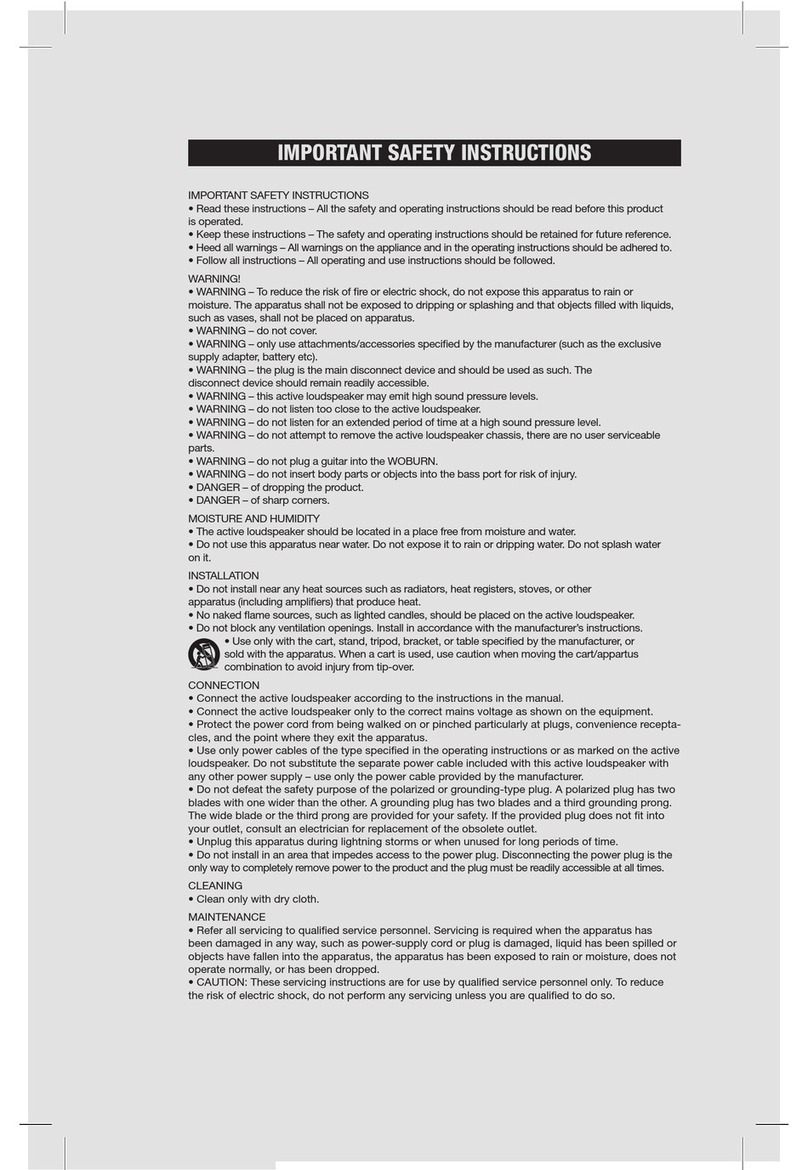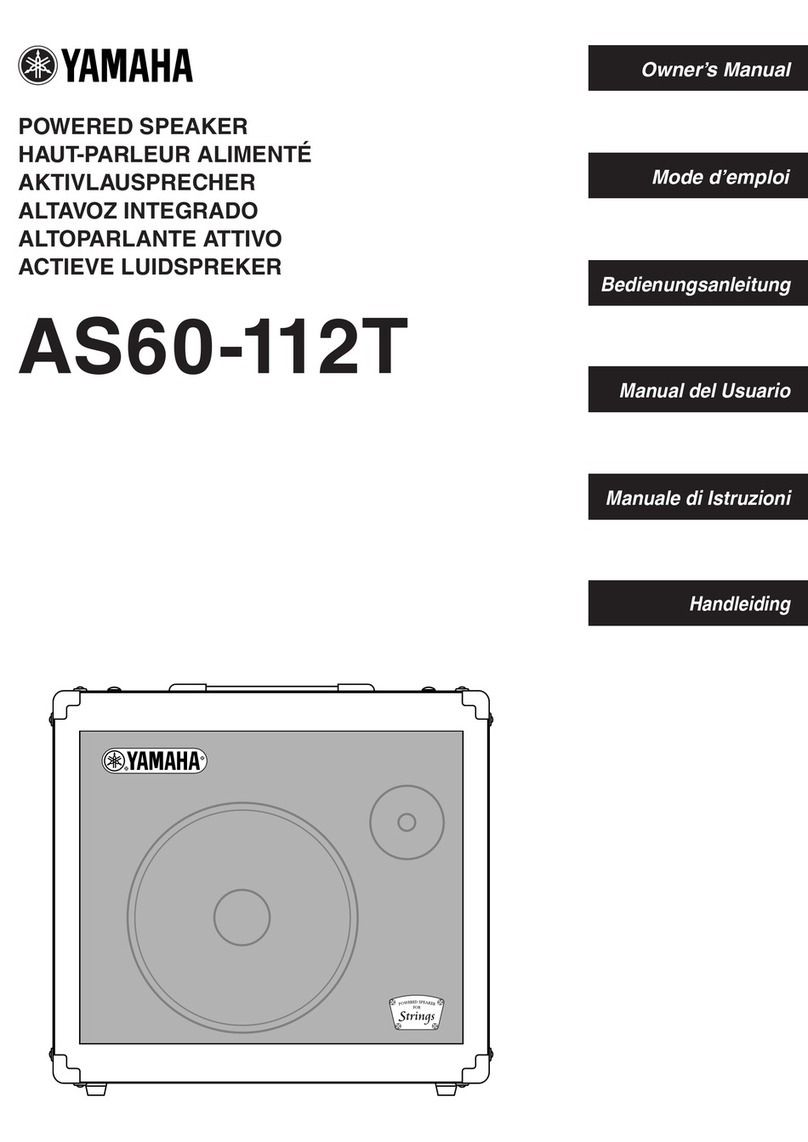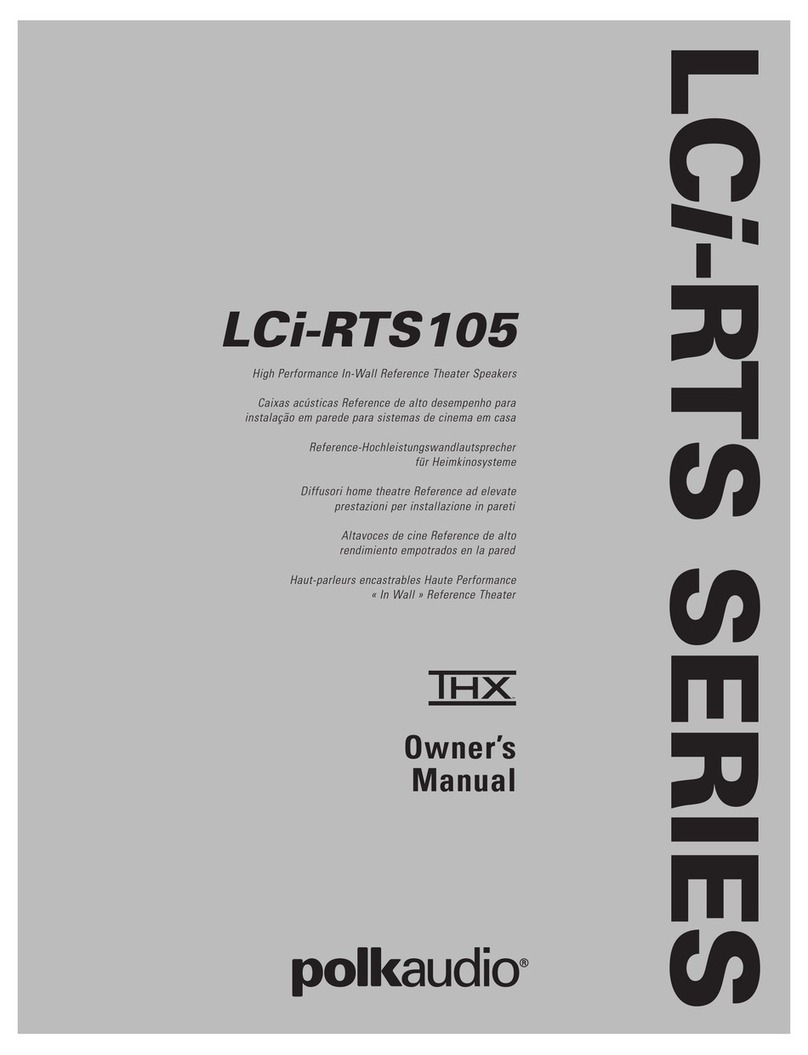Thiel CS1.6 Dimensions

the audiophile voice
HE REVIEW SAMPLES of Thiel’s new
CS 1.6 two-way, floor-standing
speakers were delivered just before
we left for an extended weekend
trip. After marveling a bit at their
appealing, intensely grained,
amberwood finish and stylish con-
tours — and, yes, a quick listen;
who could resist? — I set the pre-
amp to Tuner and we hit the road.
While the gang at National Public
Radio limbered up the 1.6’s critical
parts and prepared them for serious
play, we were watching Cactus
League spring training baseball
where essentially the same thing
was taking place.
While my abbreviated initial lis-
tening session revealed nothing
egregious about their out-of-the-box
sound, upon our return and after
100 hours or so of continuous play
the CS 1.6s were clearly in full
song. And what a delightful song it
was and continues to be. I’ll do my
best to avoid all the obvious clichés
— giant killers, bang-for-the-buck,
good things in small packages, etc.
— but the fact is that, hackneyed or
otherwise, these phrases all apply
here.
You should know first that I’m a
former Thiel owner (CS 3.5s), and I
TThhiieell CCSS 11..66
LLoouuddssppeeaakkeerr
TDan Pond
Reprinted from:
“...by audiophiles for audiophiles.”
COLOR_Reprint_Thiel.qxd 10/21/02 9:34 AM Page 1

remain an ardent fan of Jim Thiel’s
sonic design values (“just the facts,
ma’am”) as well as his devotion to
quality of both cabinets and compo-
nents. The Thiel pedigree is
deservedly among the most exalted
in Highendom. But know also that
mine is neither a blind nor deaf alle-
giance. For example, I’m not overly
fond of the appearance of some of
the 1.6’s more mesomorphic sib-
lings and, although excellent
in its day, the CS 3.5s were
to my ears never as tight and
fast on the bottom as the top,
thereby inducing a slight per-
ceptual discontinuity across
the frequency spectrum.
Happily, neither of these
concerns, and precious few
others, apply to the Thiel CS
1.6 speakers.
The CS designation stands for
“coherent source” and refers to
Thiel’s techniques for eliminating
the signal phase and arrival-time
distortions that can reduce sonic
clarity and transparency as well as
impair imaging and soundstaging.
As in other Thiel models, achieve-
ment of phase coherence starts with
the implementation of a complex,
expensive first-order crossover net-
work in combination with wide-
bandwidth drivers. It may not be
intuitively obvious to the non-engi-
neer, but when speaker designers
are working at getting the arrival
times of the two drivers’ signals to
match up, they have to make the
voice coils of the two speaker dri-
vers be the same distance from the
listener, rather than making the front
part of the speaker, the cones, be
the same distance away. Thus, to
listeners seated at “listening room
depth,” say at least eight feet from
the speakers, the front of the tweeter
is positioned further from the listen-
er than the front of the woofer, but
this is proper to coherently launch
the vital image information from the
two different speaker drivers.
The resulting sloped front surface
creates the dominant visual impres-
sion of all Thiel CS speakers. On the
1.6, the grill is neatly recessed into
the center of the massive, two-inch
thick front baffle, providing a flat
surface which transitions into grace-
fully rounded edges at the top and
sides. Attractive, heavy-duty “stabi-
lizer feet” are provided, and an
optional “outrigger” extension base
is available. This latter device is, I
suppose, for households with ram-
bunctious children or animals, but
on our pile carpet I noted no insta-
bility with or without the feet
installed. I’ve recently found that
with some lightweight floor-stand-
ing speakers, including the 1.6s, the
supplied feet didn’t enable coupling
with the subflooring through our
carpet and pad. Happily, with the
CS 1.6 I could discern no dire sonic
consequences of failing to implant
the feet into plywood.
The five-way binding posts are
substantial, with provision made for
tightening by wrench as well as
hand, although astute TAV readers
— a redundancy, no? — will surely
forgo the latter in favor of a half-
inch nut driver to assure solid con-
nections. Even though I’m sure it
was physics rather than aesthetics
that took precedence in Thiel’s
design decisions, I find the style and
proportions of the 1.6 to be posi-
tively artful in their implementation.
I don’t know the point at which
TAV’s Decor Score tops out, but to
my eye the CS 1.6 pins the meter,
and one common source of audio-
phile domestic strife is thereby
effectively eliminated.
On the inside, the CS 1.6 reflects
Jim Thiel’s “never rest on your lau-
rels” design philosophy, directed
this time towards improvements in
upper midrange performance. Both
drivers are new, with all-metal
diaphragms and “short coil
in a long gap” motor sys-
tems. The tweeter is a high-
efficiency, high output 1-
inch dome, while the woofer
is a 6.5-inch unit with a
remarkably large three-inch
diameter voice coil. This
unusual feature not only dis-
tributes the driving force
over a substantially greater area but
also reduces the distance between
the driving surface and the edge of
the cone, yielding an especially stiff
diaphragm. It also enables the mag-
net structure to fit inside, thereby
providing the shielding required for
use in a home video system.
TAV readers will undoubtedly
have taken note of Thiel’s ads that
display a large vertical slot in the
lower half of the front baffle of the
CS 1.6. Resembling an over-sized
coin slot (“Put another nickel in
...”), it is actually an innovation that
reduces resistance to the air driven
out of the cabinet by the back wave
of the woofer and lowers the chuff-
ing sometimes associated with tradi-
tional port geometries. There’s no
provision made for plugging the 20-
inch slot/port, so do-it-yourself port-
stuffing (a questionable practice,
methinks) will require a pair of
knee-highs to accomplish the mis-
sion. As is the result with most port-
ed designs, the overall efficiency of
the loudspeaker is increased some-
what and the low-end bass response
extended.
the audiophile voice
Within reason, it’s difficult
for me to conceive of a
better balanced or more
musical presentation.
COLOR_Reprint_Thiel.qxd 10/21/02 9:34 AM Page 2

Thiel speakers, most of which are
either ported or passive-radiator
cabinet designs, have been notori-
ously demanding of amplifiers, with
powerful, tightly controlling units
being the order of the day as mates
for middling-efficiency drivers.
However, with its 90-dB SPL (1
watt, 1 meter) efficiency rating, the
CS 1.6 affords a substantial
increase over the 86 dB rat-
ing of its predecessor (which
utilized a passive radiator to
enhance bass performance),
thereby greatly increasing the
number of audiophiles and
systems for which Thiel
transducers are now viable
candidates. Note, however,
that with a recommended minimum
of an amp with at least 50 watts per
channel for its 4-ohm load, even the
new version may be a tad beyond
the reach of the SET set.
At the other extreme, the CS 1.6
is capable of handling 300 watts,
double the spec of the CS 1.5. With
its modest dimensions (35.5 inches
high by 9 inches wide by 11.5 inch-
es deep), the 38-pound newcomer
could find itself in systems being
fed, and perhaps dwarfed, by some
behemoth amplifier(s). My Classé
amp can deliver 500 watts into 4-
ohm loads, weighs almost as much
as the pair of speakers combined
and costs perhaps twice as much.
Nonetheless, the symbiosis with the
CS 1.6 was evident and the results
superb. On the other hand, while
our old 100-watt Quad 405-2 amp
also drove the Thiels with ease and
generated well-detailed and musical
performances, the CS 1.6 made
clear the superiority of the Classé in
transparency and soundstaging.
You’ll want to feed the 1.6 the finest
signals possible — either immedi-
ately or as part of your system
upgrade plans — because they’ll
surely let you know when their
upstream partners aren’t carrying
their weight.
I found the 1.6s relatively easy to
set up — assisted by guidance in
Thiel’s superb owner’s manual —
and was most pleased with the
speakers well away from the back
and side walls, aimed straight
ahead, and forming an 8.5-foot
equilateral triangle with the listen-
ing position. For readers who may
have reservations about a speaker
relatively modest in its dimensions,
price ($2390 in the supplied finish
or in a painted black finish at $1990
per pair), and low frequency perfor-
mance specifications (-3 dB at 48
Hz), I urge you to set aside your
biases, choose a few favorite
recordings, limber up your goose
bumps, and give this fine speaker a
listen.
For example, check out Some
Cats Know (Telarc CD-83391), on
which Jeanie Bryson admirably cap-
tures the essence of Peggy Lee’s
cool, bluesy, and sexy style. The
1.6s convey the delicate nuances in
Bryson’s voice while delivering Jim
Hughart’s powerful bass in fine
detail. I was similarly pleased with
the 1.6’s presentation throughout
Paul Simon’s Graceland CD
(Warner Bros. 9 25447-2). Electric
bass slam, ultra-sharp South
African-style electric guitar, detailed
vocal harmonies, thumping kick
drum, all of which were layered
clearly and deeply over a surprising-
ly large soundstage. And talk about
speed! Michael Hedges finger work
on “Rickover’s Dream” (Aerial
Boundaries, Windham Hill LP WH-
1032) is replicated with extraordi-
nary clarity and snap whether he’s
plucking the standard guitar or deep
bass strings of his harp guitar.
Moreover, with the CS 1.6s, all this
is achieved even at late night- or
apartment-listening levels. As for
upper midrange purity, all I can say
is “mission accomplished, Jim.
Bravo!”
Perhaps more importantly, I
found something new in Paul Bley’s
In the Evenings Out There (ECM
1488). Not more harmonic detail or
recording venue information as
audiophiles often experience when
upgrading their systems but, rather,
a greater sense of involve-
ment with the music and
musicians. The harmonic
textures of Bley’s piano, the
weight and impact of Gary
Peacock’s bass, and John
Surman’s luscious baritone
sax are as fine and pleasing
as through my Dunlavys
(which have five drivers per
side). But with the Thiel’s wired in,
this recording provided a richer,
more sensual and rewarding experi-
ence than I’d previously realized
possible. This, to me, is what being
an audiophile is all about.
I attribute this to the far more
vivid images produced by the 1.6s.
Instruments and musicians are set
forth with a density I’ve rarely expe-
rienced. The Timekeepers: Count
Basie Meets Oscar Peterson (JVC
XR-0206-2) is as natural and realis-
tic a piano recording as I’ve heard,
and through the Thiels it is wonder-
fully — indeed, almost startlingly —
lifelike. The same is true for Rickie
Lee Jones’ must-have CD, It’s Like
This (Artemis 751 057-2). Listen to
“Show Biz Kids.” If your woofer is a
whiner, the acoustic bass won’t pro-
vide an adequate foundation,
destroying the track’s emotional
impact, and if your tweeter is a
screecher, the percussive triangle
will send you cringing for the Skip
Track button. No fear with the 1.6s,
the audiophile voice
Thiel Audio CS 1.6 Loudspeakers, $2390 per pair in standard finishes
(walnut, oak, maple, natural cherry, and black ash), or $1990 per pair
painted black. Special finishes available at extra charge. Thiel Audio,
1026 Nandino Blvd., Lexington, KY 40511; phone 859/254-9427, fax
dio.com.
Associated Equipment
Immedia turntable and arm, Grado cartridge, Sony CD player, Classé
amplification, Dunlavy speakers, cables by Yamamura, Tara,
Audiotruth, and Meitner, A/C accessories by Marigo and Monster.
Quad amplification and custom-built 2-way stand mounted speakers
are used in the satellite-based video system.
NNOOTTEESS
If I had just one word to
describe the Thiel CS 1.6,
it would be “solid.”
COLOR_Reprint_Thiel.qxd 10/21/02 9:34 AM Page 3

the audiophile voice
however; the bass whomps as it
should, the triangle rings (and rings)
with bell-like clarity, and Rickie Lee
and Joe Jackson deliver their scorn-
ful commentary there in your room.
For my listening preferences —
small group acoustic jazz, folk,
world, and a bit of rock — the CS
1.6s were almost always deeply sat-
isfying. However, as with my old
ESL-63s (to which the 1.6s bear sur-
prisingly frequent sonic resem-
blance), there’s an occasional
recording that failed to light my fire.
For example, Mick Fleetwood’s
drums didn’t have the impact neces-
sary to propel the melody and get
my toes tapping on “Go Your Own
Way” (Rumours, Nautilus NR6) and,
not surprisingly, the “Japanese
Drums” were but a pale shadow of
what’s imbedded in the grooves on
Kitaro’s Asia LP (Geffen, GHS
24087 E). But let’s be fair, I’m talk-
ing about individual tracks on a
handful of recordings, and I trust
you’ll not place undue emphasis on
these findings. After all, despite sim-
ilar shortcomings, I was giddily con-
tent for years with my ESL-63s even
though Rumours and Asia rarely
found their way to my turntable.
On the other hand, I found two
characteristics that may warrant
your closer consideration. First,
soundstage height is somewhat
restricted with the CS 1.6s, so artists
image as if they’re seated or per-
forming in a stadium-seating venue.
(See, I told you they’re reminiscent
of the 63s!) This is neither bad nor
wrong, and your response is likely
to be based simply on personal pref-
erence or, like me, the image height
to which you’ve grown accustomed.
Second, although the 1.6s are capa-
ble of casting a remarkably wide
soundstage, I was never able to
coax or conjure up images remotely
concordant with a full orchestra
playing full bore as, for example, on
the demo-like LP, Orchestrations
Astromantic (RCA RDCE-6). Smaller
ensembles and smaller scale music
are fine — in fact, often wonderful
— but if you lust for big and bold,
the CS 1.6 may leave you a mite
unfulfilled.
Let me be pointedly clear: Within
the bounds of these (unsurprising)
constraints, after a few months and
many hours with these speakers, it’s
difficult for me to conceive of a bet-
ter balanced, more musically satis-
fying presentation than that deliv-
ered by the Thiel CS 1.6. If I were
allowed just one word to describe
the 1.6, it would have to be “solid,”
and I’d apply it to the speaker’s
imaging, construction, warranty (10
years), and, of course, manufactur-
er’s reputation. My sense is that one
would need to assemble a remark-
ably fine and perhaps very expen-
sive system for the CS 1.6 to repre-
sent the weakest link in the sonic
chain, so “solid” applies perhaps
most of all to your investment.
Reprinted by permission of
The Audiophile Voice © 2001
Guts & Elbow Grease Publishing Ltd.
215 Glenridge Ave,Montclair, NJ 07042.
Subscriptions are $30.00 for one year
or $55.00 for two years within the U.S.
Canadian subscriptions are $39.00 (U.S. dollars)
for one year and $65.00 for two years.
Overseas subscriptions are $66.00 for one year.
Please make payment by check or money order in U.S. funds.
We do not use credit cards so as to help keep our overhead low.
Send payment to:
The Audiophile Voice, PO Box 43537, Upper Montclair, NJ 07043
COLOR_Reprint_Thiel.qxd 10/21/02 9:34 AM Page 4
Other Thiel Speakers manuals
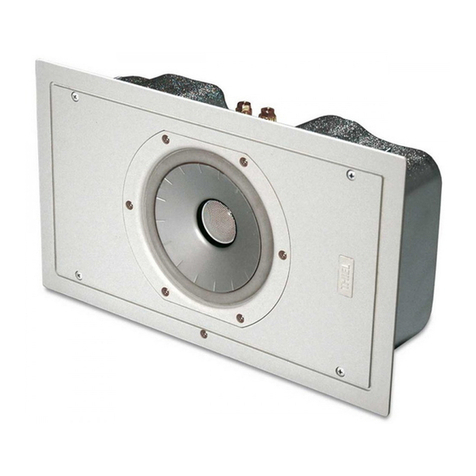
Thiel
Thiel 1.2 Coherent Technical manual
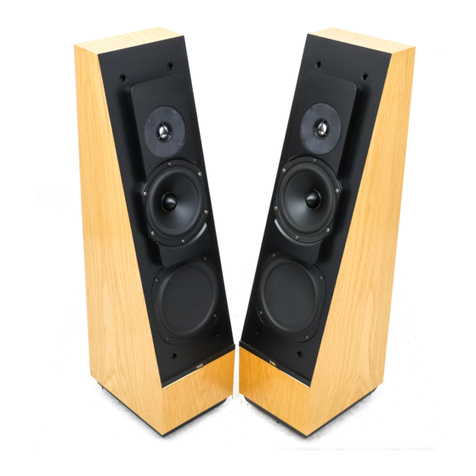
Thiel
Thiel CS1.5 Manual
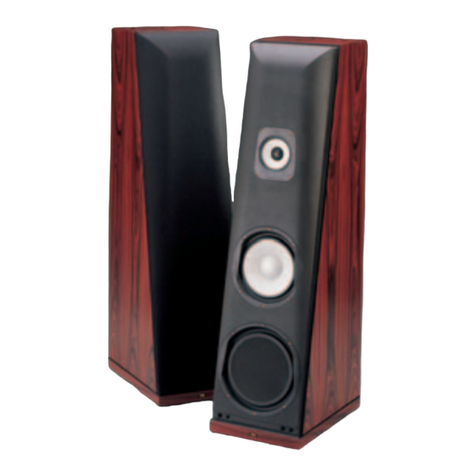
Thiel
Thiel CS6 User manual

Thiel
Thiel CS1.5 User manual

Thiel
Thiel SCS3 User manual

Thiel
Thiel SCS4T Technical manual

Thiel
Thiel DewPoint Technical manual
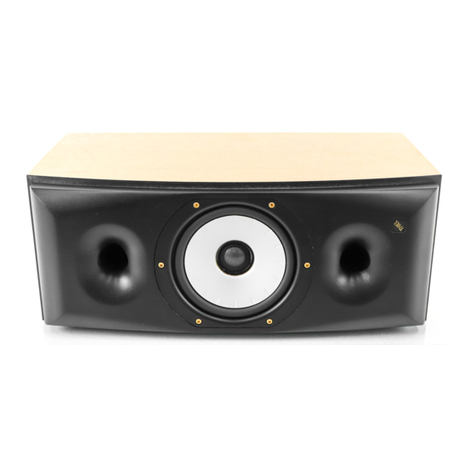
Thiel
Thiel Coherent Source SCS3 Manual
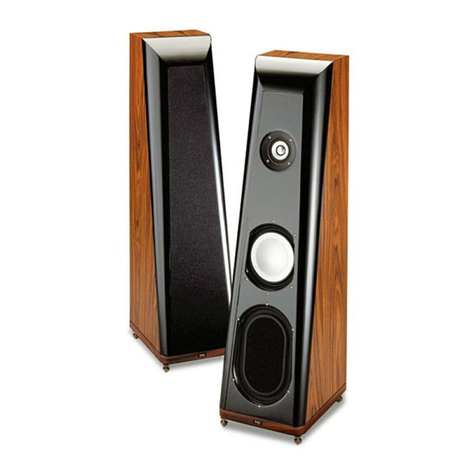
Thiel
Thiel CS2.4 User manual
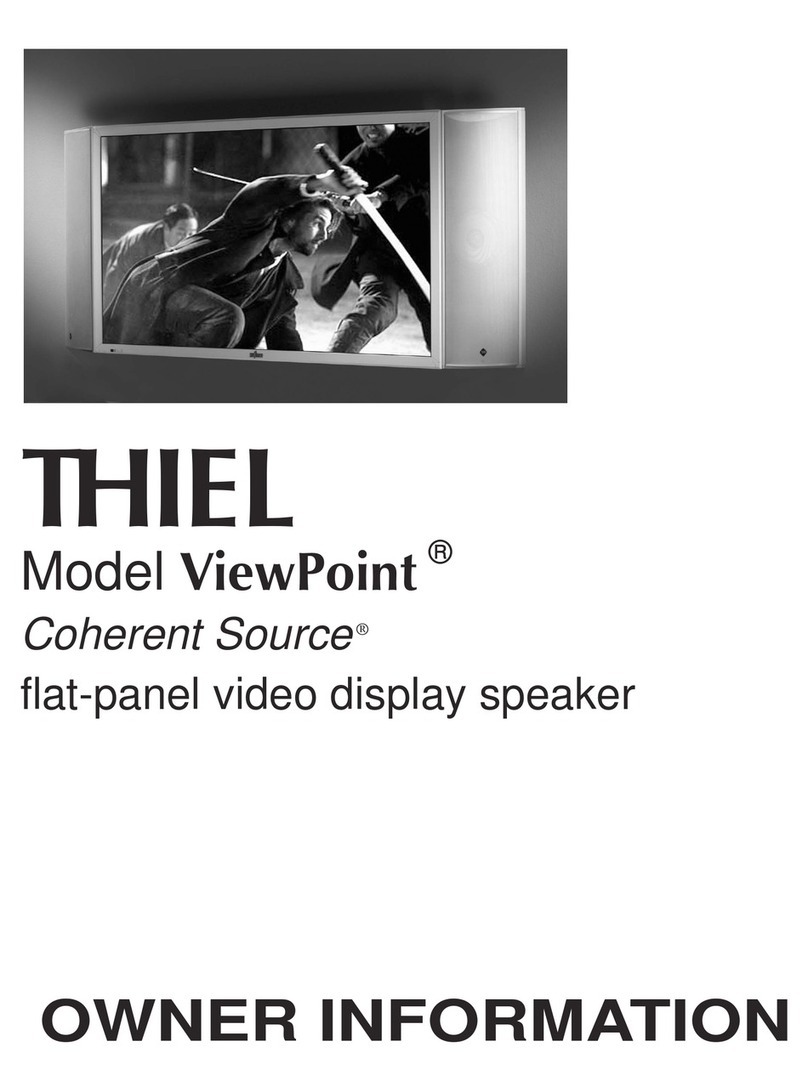
Thiel
Thiel ViewPoint User manual
